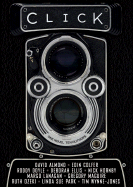
 Teachers, librarians and booksellers can find inspiration in this successful collaboration, ideal for igniting in young people the desire to do similar interlinking writing projects. In the first chapter of this 10-chapter novel, Linda Sue Park plants the seeds for the story developed by the nine authors who follow. The book opens just after George Keane, a photojournalist (called "Gee" because he signs his photos "G. Keane") who chronicled images of World War II, of Muhammad Ali's rise to champion and who traveled the globe, has died. He leaves to his grandson, Jason, a stack of his photos (some autographed by his subjects), and to his granddaughter, Maggie, a collection of seashells in a handcrafted wooden box with mysterious markings. It is a puzzle "that would last her whole life" and takes her around the world.
Teachers, librarians and booksellers can find inspiration in this successful collaboration, ideal for igniting in young people the desire to do similar interlinking writing projects. In the first chapter of this 10-chapter novel, Linda Sue Park plants the seeds for the story developed by the nine authors who follow. The book opens just after George Keane, a photojournalist (called "Gee" because he signs his photos "G. Keane") who chronicled images of World War II, of Muhammad Ali's rise to champion and who traveled the globe, has died. He leaves to his grandson, Jason, a stack of his photos (some autographed by his subjects), and to his granddaughter, Maggie, a collection of seashells in a handcrafted wooden box with mysterious markings. It is a puzzle "that would last her whole life" and takes her around the world.The authors' styles range from the mystical, as with David Almond's tale of 13-year-old Annie Lumsden, who learns that her father was part sea creature, to stark realism, as in Deborah Ellis's story of 17-year-old Lev, a Russian prisoner who builds the wooden box that holds Maggie's shells. Eoin Colfer's chapter injects some humor, as Jason goes to work for an Irishman who runs a pizza parlor and develops a dark side; a passing phrase in Colfer's contribution seems to be, at least in part, the inspiration for Roddy Doyle's chapter about Gee's own similar missteps, while Nick Hornby's chapter further explores Gee's foibles by introducing another family Gee kept in France. Ruth Ozeki's moving story of Taro, who was not yet 18 when he lost both of his legs in World War II, connects back to both Hornby's mention of Gee's images taken in Japan and also to the seashell that gives Maggie her first clue as to the scope and meaning of Gee's gift to her. Such reverberations recur throughout the novel, making it much more than a connect-the-dots exercise. In Tim Wynne-Jones's chronicle of Jason as a budding photographer in his own right, for instance, the teen gives his craft a modernist twist. Margo Lanagan pulls everything together in her chapter, where Maggie, now an elder stateswoman, is mounting a three-generation retrospective of Gee's, Jason's and her niece's works, in an era in which photography is a dying art. All of the stories play with the idea of perspective; Gee begins as the beholder, but every character gets a chance to share his or her perspective--on Gee, and on the world. Cumulatively the authors suggest that any one event can be viewed from any number of angles, and that matters may be far more complex than first meets the eye. Perhaps no one puts the book's theme better than Maggie in Gregory Maguire's concluding chapter, as the heroine reflects on Jason's evolution via the camera lens, and her own journey as a result of piecing together the puzzle behind Gee's gift to her: "That's all we ever want to give away, you know . . . our hopes that the young will remember to look, and to see. Through whatever means possible."--Jennifer M. Brown

